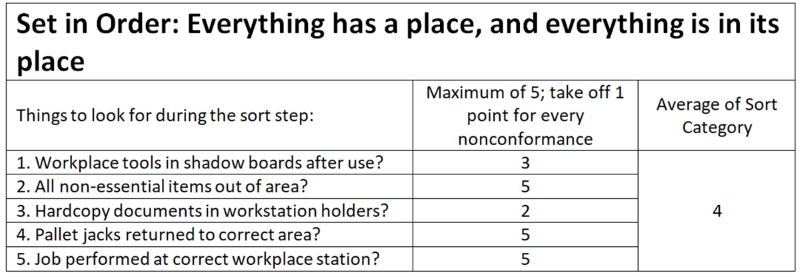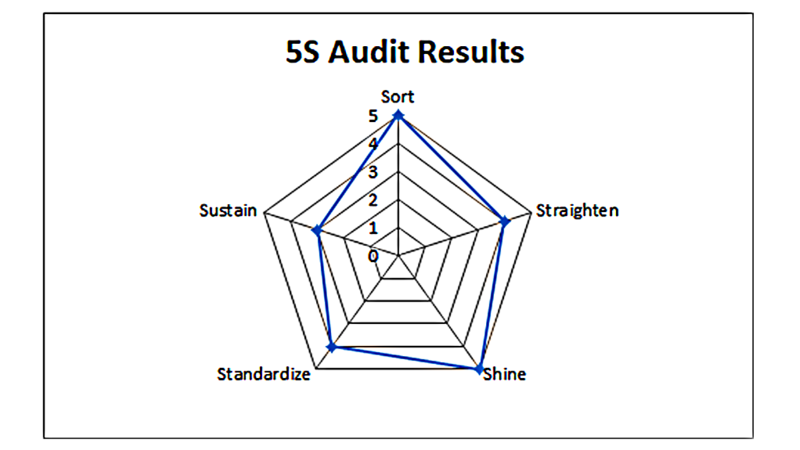What do Amazon, Boeing, 3M, and the United States Army and Marine Corps all have in common? For starters, these establishments all use lean principles and methodologies. Another thing they have in common is that visitors to their facilities are taken aback by their stellar levels of housekeeping and orderly workplaces. However, how long do you think they would stay in business if they started slacking in this area? Probably, not very long – and they rely on 5S, a powerful lean tool, to maintain these high levels of quality.
Do these prerequisites first
The drive for 5S implementation is transformative, and it gets people to think outside of the box. Organizations that have great success with it use lean tools such as 5S audits and key performance indicators (KPIs). One crucial thing you should do before starting 5S implementation is immerse yourself in lean philosophy. Most stakeholders do not begin a 5S program if they do not intend to be lean afterward. And if you cannot successfully implement 5S, you don't have a chance of implementing lean.
The book, Lean Thinking: Banish Waste and Create Wealth in Your Corporation by James Womack and Daniel T. Jones, is a must read for anyone starting their lean journey. Meanwhile, The 5S Pocket Guide by James Peterson and Roland Smith discusses everything you need to know about 5S programs in a condensed form. Reading these books is the first step toward efficiently implementing a 5S program for your organization.
Kickstart the best 5S program
The best implementation success is through excellent, well-thought-out planning. Anything else is Muda (that's waste in lean terms).
Here are three foolproof pointers for kickstarting your 5S workplace organization:
- Pointer 1: Play nice. 5S is considered a tool, but you do not have to be one while showing people how to transform. People will not want to play in the sandbox with you if you are a jerk. After all, you'll be rolling up your sleeves and working alongside them doing something that is typically not 'your job,' per se. You want the circumstances to be a pleasant one to remember.
- Pointer 2: Inform all departments of the plan. It is paramount that everyone involved knows about your 5S implementation plan for proper buy-in. If you don't get it, anchor-dragging personalities that didn't buy your pitch will bog down your efforts. For starters, have an ice-breaking meeting with the affected departments. During the meeting, give them an overview of what's at the core of 5S, along with the proposed plan for implementation. Importantly, state the benefits of the program. The optimal plan should provide a strategic timetable or completion date. When each step is completed, communicate that fact in detail to everyone involved in the 5S efforts.
- Pointer 3: Lead by example. Leaders get to be leaders by – you guessed it – leading. One of the best ways to sound the charge for 5S implementation is leading by example. This approach involves getting in the trenches with the employees and working through it all with them. Workers are likely to follow the lead after that. Having everyone's buy-in and continued involvement helps, especially with the physical workload of the first 3S's. Also, don't forget to take plenty of before-and-after pictures; they are convincing proof for the visitors and workers of just how far everyone involved has come in the process. Once initial gains are made, the pics are useful reminders that keep everyone motivated to continue their 5S endeavors.
Know the five elements of 5s
Five elements constitute 5S, and you should do all of them in sequence for optimal success. They are Sort, Set in Order, Shine, Standardize and Sustain. Here is what they entail:
- Sort: Here, you sort out the essential from the nonessential.
- Set in Order: Everything has a place, and everything is in its place.
- Shine: A little more abstract than the other steps, Shine is much more than housecleaning. Examples include painting dull milestone objects or equipment to make them shine.
- Standardize: The first 3S's need to be standardized. Roles and responsibilities need to be defined, documentation and processes for the organization need to be standardized, including those for 5S.
- Sustain: The most challenging part of 5S, this step is designed to ensure you hold onto gains made in the first 4S's.
Conduct 5s audits
To keep people motivated and continuously improving during the process, you must conduct audits. Also, it should be more than one person because a new set of eyes keeps things fresh. Moreover, sustainment is the most challenging part of the program, but you can tame it through periodic 5S audits. So, how do you conduct a 5S audit?
To conduct a 5S audit, you start by making a simple Excel spreadsheet with five parts the company needs to work on based on each of the five categories of 5S. The five categories are then broken down into five sections, with one out of five scores on each line. All lines have a maximum score of five, and each category is tallied up and shown on the right.
Develop and use 5S KPIs
Here is an example of what criteria you would audit for Set in Order, the second 5S. As you can see, the two areas that got dinged need a little work. That result is fine for now, and part of the continuous improvement effort that is the backbone of lean.

You can feed results from the 5S audit form to data fields in an Excel 5S radar chart. You can then post the results of it and the audit form in the area that you audited. A 5S radar chart can be a robust KPI since 5S audit scores are visual and noticeable at a glance. 5S audits will then lead to root cause analysis troubleshooting and strategies to help alleviate any issues and their reoccurrence. Once problems are proven to be under control after monitoring, you can change parts of the 5S's to focus on any new housekeeping issues.

Final thoughts
We've outlined an easy way to implement a successful 5S program, but it won't happen overnight. Besides devoting a significant amount of time to it, the program doesn't require much of an investment. The concept is easy to understand, but it requires discipline. Once you have success, the tangible benefits and returns are more than worth it.
